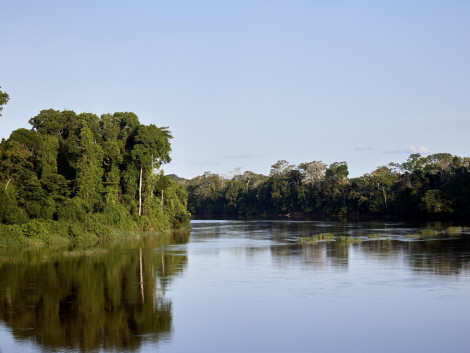

News | 10.02.2023
The Carbon & Biodiversity Commission regularly reviews relevant news and information on carbon and biodiversity and prepares a summary. We share with you here the main points of the 6th watch. The newsletter is available on request for ATIBT members.

This newlsletter focuses on two thematics: the debates on REDD+ credits and the Montreal COP15 on biodiversity.
On the debates on REDD+ credits
The projects involved in the debate are the REDD+ projects that avoid emissions, and not the reduction and sequestration projects that are subject to less criticism, including those of The Guardian, which recently conducted an investigation on the subject.
According to The Guardian's investigation, 94% of the carbon credits generated by VCS-certified projects are "phantom", i.e. not actually representing a reduction in carbon emissions. Verra refutes the figures given, believing that the methodologies used to obtain these figures are unreliable.
Although open to criticism, the REDD+ mechanism is the only one that can mobilize large-scale funding for forest and biodiversity protection and is part of the global solution to reach the Paris objectives.
There are many ways to improve. These projects should not disappear, but certification methodologies for obtaining carbon credits need to be refined. Although carbon projects play an important role in reducing global emissions and deforestation, national governments retain the greatest leverage.
The problem is not so much with the projects, which are still positive for the environment, as with the companies that buy these credits in order to offset carbon emissions. If the credits are "fictitious", the company buys "false" emission reductions and clears itself of its own efforts.
It is therefore necessary to get away from the logic of "carbon offsetting" which implies that each ton of CO2 emitted can be compensated, as this does not encourage actors to make a real effort to reduce emissions.
On the subject, you can read the CIFOR article that we relayed last week.
On the COP 15 in Montreal on biodiversity
The collapse of biodiversity is irrevocable: 1 million species are threatened with extinction, 75% of the earth's surface has been significantly altered and 85% of wetlands have disappeared.
The objective of the COP15 was to obtain results for the protection of nature and the means to put an end to the impoverishment of biodiversity at the global level thanks to quantified, measurable objectives, with a monitoring framework for the period 2022-2030.
The framework set is ambitious but at least realistic and achievable, with concrete numerical targets including the protection of 30% of land and oceans by 2030 (currently 17% of land and 8% of marine areas are under protection). To achieve these objectives, the agreement provides for substantial funding.
The adoption of the Kunming-Montreal framework represents an important step forward, firstly because it establishes an international reference for action for living things, but also because some of the objectives it sets out are ambitious. However, several points remain unclear and leave much room for interpretation. It is regrettable that this agreement is not binding.
The entire watch is available on request for ATIBT members.
***
Your contacts at the Carbon & Biodiversity Commission:
For TEREA :
Pierre Schueller : p.schueller@terea.net
Coline Seyller : c.seyller@terea.net
For Eticwood
Marion Bouchat : m.bouchat@eticwood.com
Maxime Capelle : m.capelle@eticwood.com
tag(s) :